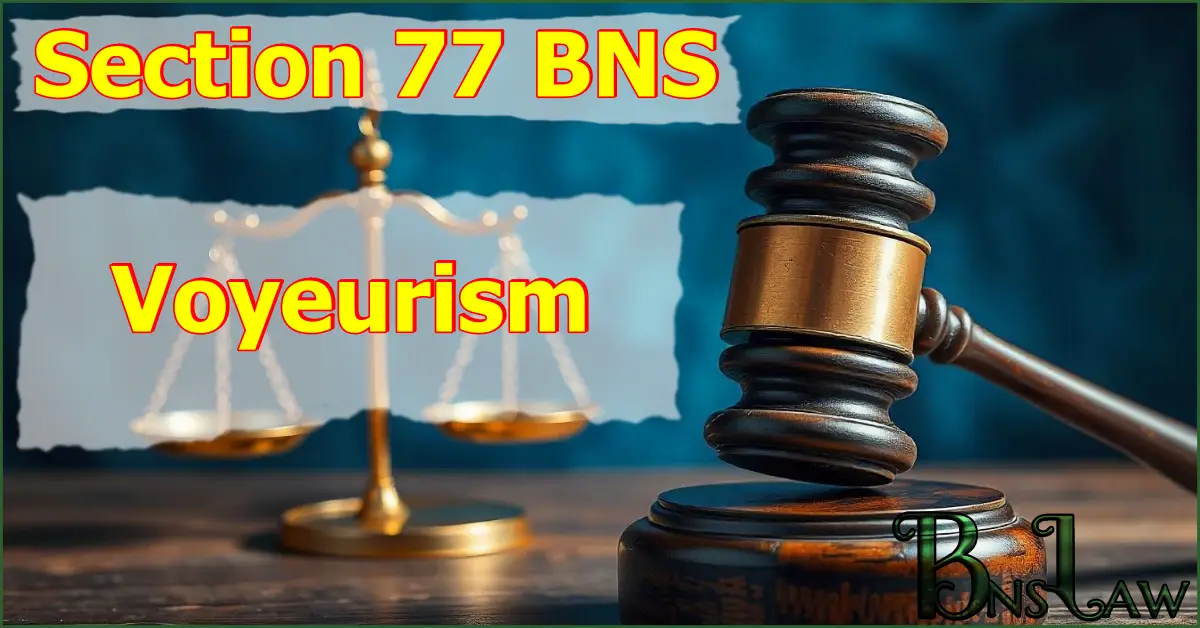Section 77 BNS | BNS 77 | Voyeurism Section in BNS
Whoever watches, or captures the image of a woman engaging in a private act in circumstances where she would usually have the expectation of not being observed either by the perpetrator or by any other person at the behest of the perpetrator or disseminates such image shall be punished on first conviction with imprisonment of either description for a term which shall not be less than one year, but which may extend to three years, and shall also be liable to fine,
and be punished on a second or subsequent conviction, with imprisonment of either description for a term which shall not be less than three years, but which may extend to seven years, and shall also be liable to fine.
Explanation 1— For the purposes of this section, “private act” includes an act of watching carried out in a place which, in the circumstances, would reasonably be expected to provide privacy and where the victim’s genitals, posterior or breasts are exposed or covered only in underwear; or the victim is using a lavatory; or the victim is doing a sexual act that is not of a kind ordinarily done in public.
Explanation 2— Where the victim consents to the capture of the images or any act, but not to their dissemination to third persons and where such image or act is disseminated, such dissemination shall be considered an offence under this section.
READ OTHER SECTIONS OF CHAPTER V — OF OFFENCES AGAINST WOMAN AND CHILD
FAQs of BNS Section 77
-
77 BNS punishment and fine
Punishment and fine under Section 77 of the BNS: Imprisonment for not less than 1 year but which may extend to 3 years and fine.
Second or subsequent conviction: Imprisonment for not less than 3 years but which may extend to 7 years and fine.
-
77 BNS cognizable or not
The offence under Section 77 of the BNS is cognizable.
-
77 BNS bailable or not
The offence under Section 77 of the BNS is bailable.
Second or subsequent conviction: Non-bailable. -
77 BNS trial court
Offence specified in Section 77 of the BNS is triable by the Court of Session.
Important Points
- Cognizable Offences: These are offences where a police officer can arrest a person without a warrant.
- Non-Cognizable Offences: These are offences where a police officer cannot arrest a person without a warrant.
- Bailable Offences: These are offences where the accused can get bail from the police station itself. All bailable offences are listed in the First Schedule of the Bharatiya Nagarik Suraksha Sanhita (BNSS).
- Non-Bailable Offences: Offences in which bail is not granted directly from the police station but after hearing the case in the court, the judge decides when bail will be granted. All non-bailable offences are listed in the first schedule of the Bharatiya Nagarik Suraksha Sanhita (BNSS).
- In the above FAQ, “trial court” means the court that has jurisdiction to try the offence.
- In the above FAQ, the expression “Magistrate of the first class” and “Any Magistrate” does not include Executive Magistrates.
Read other Sections of the BNS
Reference Link: New Criminal Laws (BNS), Ministry of Home Affairs







